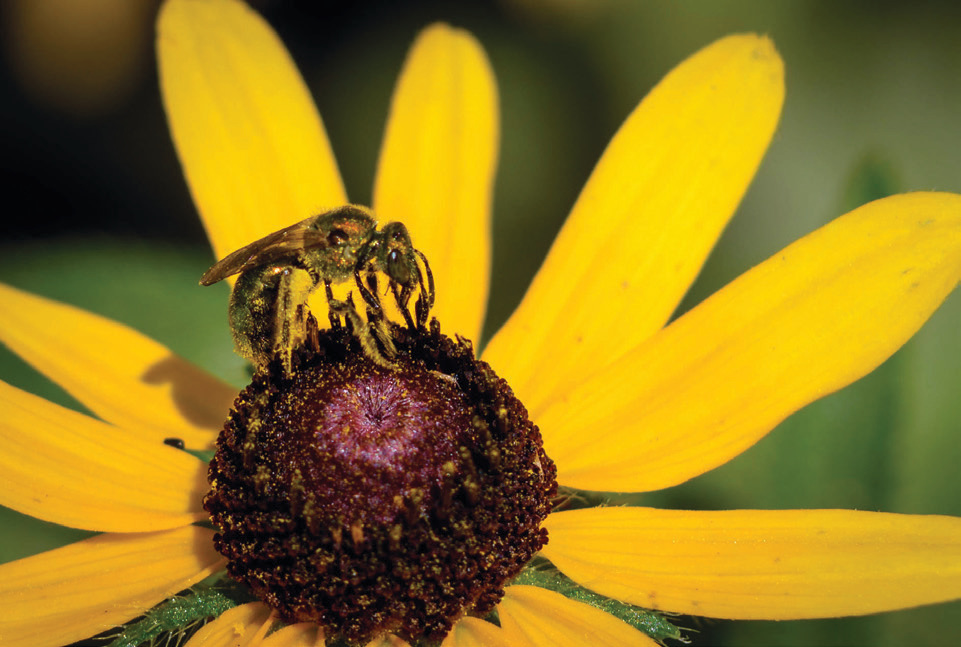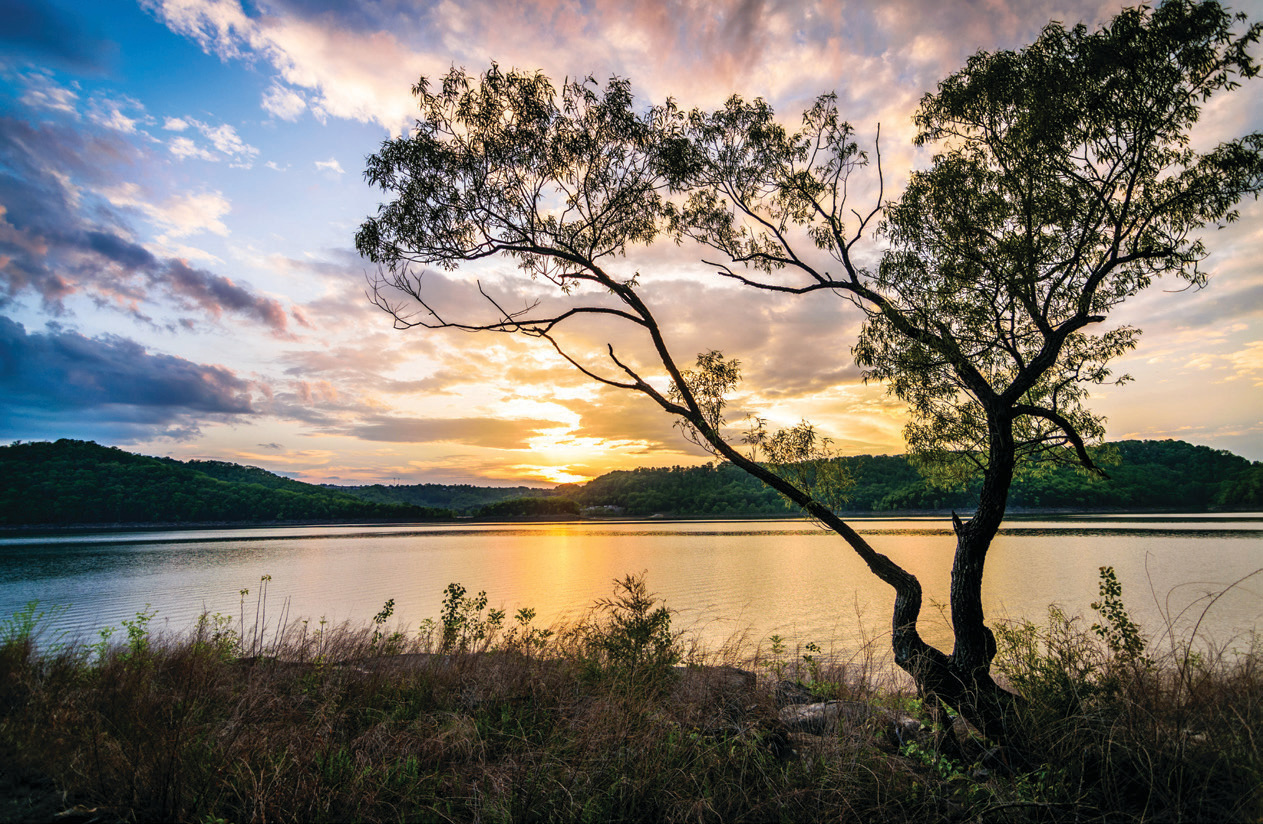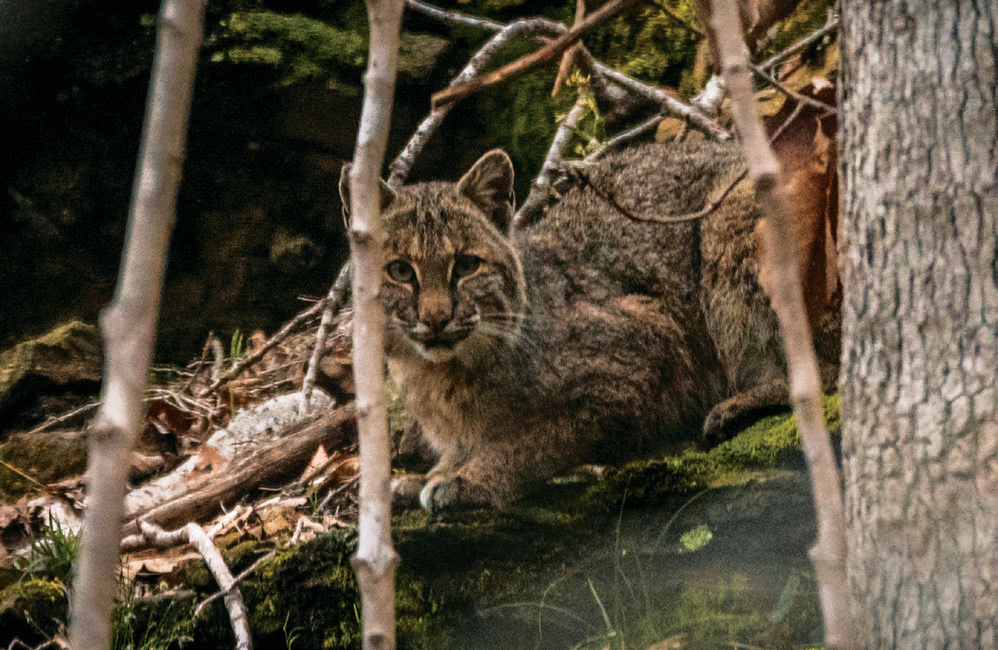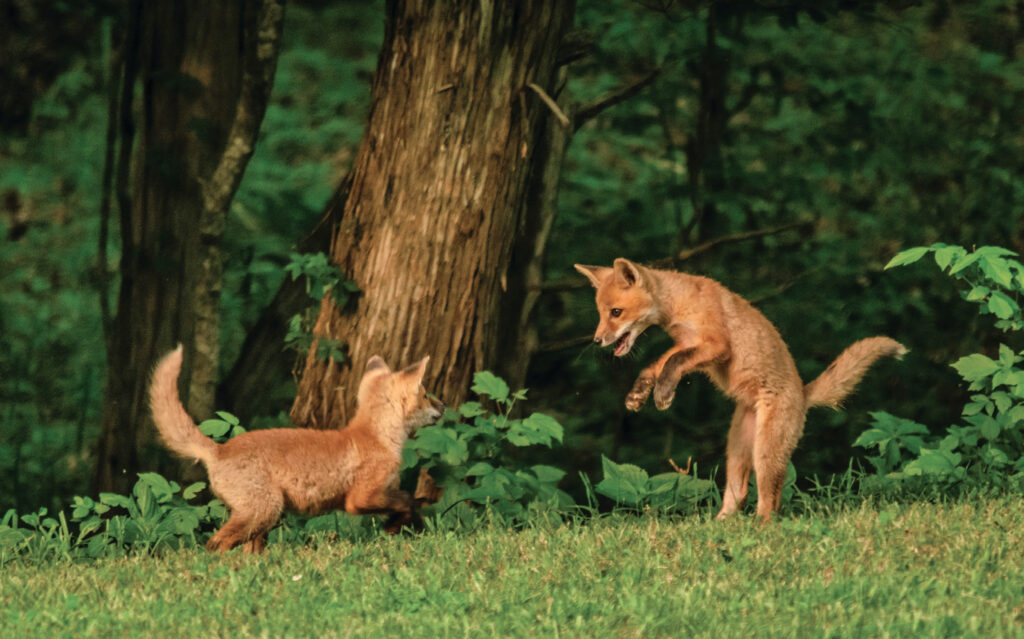
Drive through any number of parks across Tennessee and it’s not unusual to be flanked by neatly mown roadsides. But the staff at Edgar Evins State Park in Silver Point decided to take a different approach to the park’s corridors by creating a natural habitat for pollinators such as bees and butterflies.
In planning for a number of years, the idea came to fruition in 2021 when park staff sprayed, burned and hydroseeded roadsides with a native mix of 21 different wildflower species. The park now has an abundance of native wildflowers along its roadways and steep banks. The result has been the observation of more than a dozen native bee species, four native fly species and a dozen-plus butterfly species working the habitat.
This project earned the park one of two Excellence in Resource Management awards given out last fall by the Tennessee Department of Environment and Conservation, the other going to Dunbar Cave State Park.

“These two parks have shown outstanding commitment to protecting our natural wonders,” said TDEC Commissioner David Salyers at the time the awards were presented. “From providing a natural habitat for pollinators to the preservation of a cave, the parks show an understanding of the responsibility we have in protecting the environment, and we are proud to honor both of the parks with this award.”
The pollinator corridor was the brainchild of Park Ranger Mark Taylor, who serves as the park’s resource manager.
“In 2013, I wrote up what needed to be done to the hillsides,” Taylor says. “So there is a large sense of accomplishment with the park receiving this award.”
The pollinator corridor is about 2 miles in length and covers about 2.5 acres, replacing the previously mown grass, what Taylor says was essentially a desert for insects.
“It also reduces our mowing and our carbon footprint,” says Taylor, who has been at Edgar Evins State Park for 20 years.
Managing flora and fauna
The bees and butterflies are not the only species that call this 6,337-acre park home or a temporary stopover, however. In fact, a lot of rare species are found here, including a couple that are only found in the relatively confined area the park occupies. One species of verbena plants is so newly identified that it hasn’t yet been given a taxonomic name.
Taylor says that spring wildflowers cover the forest floor along the park’s trails in early spring, starting in late February and continuing through May. Visitors can see a new selection of wildflowers almost every week through the spring months. April is a great month to view wild hyacinths at the park along the Millennium and Merritt Ridge trails. In especially good years, these flowers can be found covering several acres of the forest floor along these trails.
“In May, we provide boat cruises to see the western wallflowers that grow along the bluffs of Center Hill Lake,” Taylor adds. “We usually see over a dozen other species growing from the bluffs along with the western wallflowers during these cruises.”
The park is also the second-largest breeding site in Tennessee for the cerulean warbler, which is a species in decline. In addition to this little blue beauty, 195 other species of birds can be found in the park at one time or another.
“The diverse forests provide excellent habitat for a plethora of songbirds, especially the declining cerulean warbler, which loves to nest on the steep wooded slopes,” Taylor says. “The observation tower provides a bird’s-eye view into the canopy, giving birders great opportunities to see migrating or breeding songbirds that like to stay high up in the trees. The lake itself provides great habitat for wintering or migrating waterfowl, allowing further opportunities for viewing a diversity of birds. Bald eagles have also been nesting at the park for the past 20 years, and their numbers have been steadily increasing.”


But wait, there’s more!
Edgar Evins is located on the shores of Center Hill Lake, so of course there are plenty of recreational opportunities during a visit. There are three boat launch ramps, a marina with slip and boat rentals and fishing supplies for sale. With more than 18,000 acres, the lake offers ample opportunities for boating, fishing, swimming, canoeing and other water recreation. A restaurant at the marina is open seasonally.
Hikers can take to about 12 miles of trails that vary in difficulty. These trails provide scenic views of the lake, chances to explore the park’s biodiversity and opportunities to see some limestone sinks and old homesteads or give easy access between the marina and campground.
Speaking of the campground, it is here that you’ll find something unique among state parks: raised wooden platform deck sites instead of the more typical dirt or concrete pads. This is because 6,000 of the acres of the park are actually leased from the Corps of Engineers, and these campsites are constructed in such a way as to have less of an impact on the landscape.
There are 60 tent and trailer sites with electric and water hookups, picnic tables, grills and beautiful views of the lake. If more primitive camping is more to your liking, there are nine walk-in sites available. Campers will also have access to three bathhouses with hot showers (one of which is open year-round), a sewage dump station and a camp store. There is also a number of cabins available for rental.

Home sweet home
While the park is home to hundreds of species of flora and fauna and can feel like a relaxing home away from home for visitors, especially many of the returning ones who discovered the park during the pandemic, for Brad Halfacre, the park really is home. Halfacre, the current park manager, grew up living in the park when his father, Carl, was the manager. The elder Halfacre retired in 2014. The park had a few different managers after that until Brad followed in his father’s footsteps when he became manager in 2018. His thoughts on being back at Edgar Evins are simple:
He’s home.



